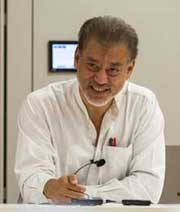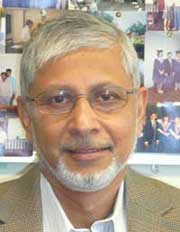How France Underdevelops Africa
Opinion
– The 1960s saw the formal independence of most sub-Saharan African French colonies. However, their economies have not advanced much, leaving most people poorer than in other postcolonial African economies.
Decolonization?
Pre-Second World War colonial money arrangements were consolidated into Colonies Françaises d’Afrique (CFA) franc zone set up on 26 December 1945. Decolonization became inevitable after France’s defeat at Dien Bien Phu in 1954 andWithdrawal from Algeria less than a decade later.
Anis Chowdhury
France insisted decolonization must involve ‘interdependence’ – presumably asymmetric, instead of between equals – not true ‘sovereignty’. For colonies to get ‘independence’, France required membership of Communauté Française d’Afrique (still CFA) – created in 1958, replacing Colonies with Communauté.
CFA countries now have two currency unions. Benin, Burkina Faso, Côte d’Ivoire, Guinea-Bissau, Mali, Niger, Senegal and Togo belong to UEMOA, the French acronym for the West African Economic and Monetary Union.
Its counterpart CEMAC, the Economic and Monetary Community of Central Africa (EMAC), includes Cameroon and the Central African Republic as well as Equatorial Guinea, Gabon and Equatorial Guinea.
Both CEMAC (UEMOA) and CEMAC use CFA francs. Equatorial Guinea, an ex-Spanish colony that joined France in 1985, was one of two non French colonies. Guinea-Bissau, an ex-Portuguese colony, was the last to join the Union in 1997.
Such requirements have ensured France’s continued exploitation. Eleven of the 14 former French West and Central African colonies remain least developed countries (LDCs), at the bottom of UNDP’s Human Development Index (HDI).
French African colonies
In 1960, Guinea was the first country to leave the CFA. Before fellow Guineans, President Sékou Touré told President Charles de Gaulle, “We prefer poverty in freedom to wealth in slavery”.
French efforts to destabilize Guinea were quickly repelled. Counterfeit banknotes were printed and circulated for use in Guinea – with predictable consequences. This massive fraud brought down Guinea’s economy.

Jomo Kwame Sundaram
France withdrew more than 4,000 civil servants, judges, teachers, doctors and technicians, telling them to sabotage everything left behind: “un divorce sans pension alimentaire” – a divorce without alimony.
Ex-French espionage documentation service (SDECE) head Maurice Robert later acknowledged, “France launched a series of armed operations using local mercenaries, with the aim of developing a climate of insecurity and, if possible, overthrow Sékou Touré”.
In 1962, French Prime Minister Georges Pompidou warned African colonies considering leaving the franc zone: “Let us allow the experience of Sékou Touré to unfold. Many Africans are beginning to feel that Guinean politics are suicidal and contrary to the interests of the whole of Africa”.
President Sylvanus Olmio, a Togo independence leader was assassinated at the US Embassy on 13 January 1963. This occurred a month after he created a central bank and issued the Togolese Franc as legal tender. Togo was still in the CFA.
Mali quit the CFA and replaced it with the Malian Frank in 1962. However, Modibokeita, a radical independence leader and its first president was removed by a coup in 1968. It is not surprising that Mali re-joined CFA in 1984.
Resource-rich
All eight UEMOA economies are oil importers. They also export agricultural commodities like cotton and cocoa. The six CEMAC economies rely heavily on oil exports, except for the Central African Republic.
CFA experts claim that gluing the FCFA to a French franc, and later the euro, has kept inflation down. But lower inflation has also meant “slower per capita growth and diminished poverty reduction” than in other African countries.
The CFA has “traded decreased inflation for fiscal restraint and limited macroeconomic options”. Unsurprisingly, CFA members’ growth ratesOn average, they were lower than those in non-CFA countries.
With one of Africa’s highest incomes, petroleum producer Equatorial Guinea is the only CFA country to have ‘graduated’ out of LDC status, in 2017, after only meeting the income ‘graduation’ criterion.
Its oil boom ensured growth averaging 23.4% annually during 2000–08. But growth has fallen sharply since, contracting by -5% yearly during 2013–21! Its 2019 HDI of 0.5292 ranks it tenth. 145 of 189 countriesBelow the 0.631 average for middle-ranking nations
Poor people
With over 70% of its population poor, and over 40% in ‘extreme poverty’, inequality is extremely high in Equatorial Guinea. The top 1% got over 17% of pre-tax national incomeIn 2021, the bottom half saw 11.5%.
Four of ten 6–12 year old childrenMany more children in Equatorial Guinée were not in school in 2012 than in other poorer African countries. Half of the children who started primary school didn’t finish, and less than a quarter continued on to middle school.
Gabon is a member of CFA the fifth largest African oil producerThe country is a middle-income country. Gabon is highly vulnerable to volatility in oil prices, with petroleum accounting for 80% of Gabon’s exports, 45% GDP and 60% of fiscal revenue.
One in three Gabonese lived in povertyOne in ten people were living in extreme poverty in 2017, according to the. More than half of the country’s rural residents were poor, with urban poverty three times greater than rural areas.
Côte d’Ivoire, a non-LDC CFA member, enjoyed high growth, peaking at 10.8% in 2013. Growth fell due to lower cocoa prices, and Covid-19. 2% in 2020. About 46% of Ivorians lived on less than 750 FCFA($1.30 daily), with its HDI ranking 162 of 189 for 2019.
CFA’s neo-colonial role
Clearly, the CFA “promotes inertia and underdevelopment among its member states”. It’s worse, it also limitsCredit is available for fiscal policies initiatives, including industrialization promotion.
Credit-GDP ratios in CFA countries have been low at 10–25% – against over 60% in other Sub-Saharan African countries! Low credit-GDP ratios are also a sign of low credit. poor finance and banking facilitiesInvesting in the wrong way is not effective funding.
CFA members lose the ability to adjust monetary and exchange rates, and are less able to implement development initiatives. They are also unable to deal with commodity price and other problems.
The CFA’s institutional requirements – especially keeping 70% of their foreign exchange with the French Treasury – limit members’ ability to use their forex earnings for development.
More recent fiscal rules limiting government deficits and debt – for UEMOA from 2000 and CEMAC in 2002 – have also constrained policy space, particularly for public investment.
The CFA has also notTrade among members was encouraged. Six decades later, average trade between CEMAC-UEMOA members was averaging 4.7% and 12% of their total commerce respectively. Worse, the pegged exchange rate has exacerbated this situation. balance of payments volatility.
Capital flight has been made possible by unrestricted French transfers. The FCFA’s unlimited euro convertibility is supposed to reduce foreign investment risk in the CFA. However, foreign investment is lowerCompared to other developing countries.
Total net capital outflows to CFA countries during 1970–2010 came to $83.5 billion – 117% of combined GDP! Capital flight from CFA economies was much more than from other African countries during 1970–2015.
IPS UN Bureau
Source: ipsnews
